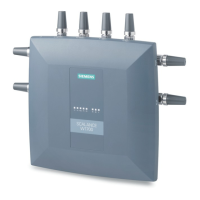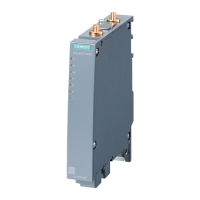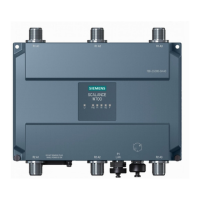Initial Configuration Tasks
7.1 Configuring System Parameters
SCALANCE W1750D UI
Configuration Manual, 02/2018, C79000-G8976-C451-02
85
Console access When enabled, you can access the AP through the
# console
Telnet server To start a Telnet session with the AP CLI, enable
access to the Telnet server.
# telnet-server
LED display LED display status of the AP. To enable or disable
LED display for all APs in a cluster, select
or
, respectively.
The LEDs are always enabled during the AP
# led-off
Extended SSID
is enabled by default in the factory
default settings of APs. This disables mesh in the
factory default settings.
The Access Point supports up to 14 SSIDs when
Extended SSID is disabled and up to 16 SSIDs with
Extended SSID enabled.
# extended-ssid
Deny inter user bridging If you have security and traffic management policies
defined in upstream devices, you can disable bridging
traffic between two clients connected to the same AP
on the same VLAN. When inter user bridging is de-
nied, the clients can connect to the Internet but cannot
communicate with each other, and the bridging traffic
between the clients is sent to the upstream device to
make the forwarding decision.
By default, the
parameter is
disabled.
# deny-inter-user- bridging
To disable inter-user bridging for
the WLAN SSID clients:
(scalance)(config)
# wlan ssid-profile
<ssid-profile>
(scalance)(SSID Profile
<ssid- profile>)# deny- in-
ter-user-bridging
Deny local routing If you have security and traffic management policies
defined in upstream devices, you can disable routing
traffic between two clients connected to the same AP
on different VLANs. When local routing is disabled,
the clients can connect to the Internet but cannot
communicate with each other, and the routing traffic
between the clients is sent to the upstream device to
make the forwarding decision.
By default, the
parameter is disa-
# deny-local-routing
